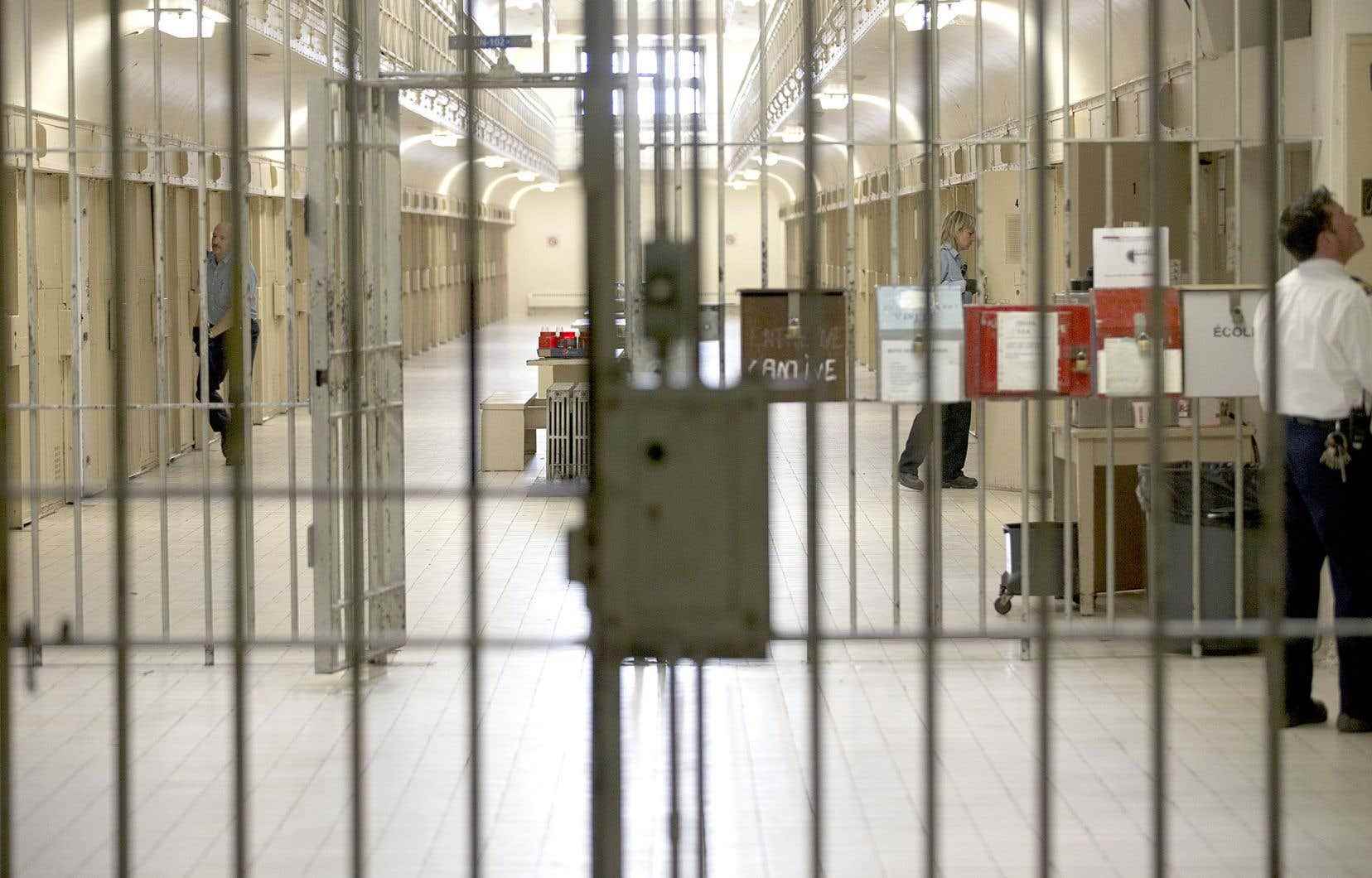As gunfire erupts in the streets of Montreal, politicians point to the US border, where they say illegal weapons end up in the hands of criminals. They are calling for tougher prison sentences for traffickers, although experts say this would have only a limited effect on gun violence.
The question of the length of sentences has come back to the fore with the recent case of trafficker William Rainville.
On March 5, 2021, in the spring snow, this 25-year-old young man crossed the American border dragging hockey pockets filled with firearms on a toboggan destined for Quebec. And not just a small amount: there were 248 Glock-type handgun frames (about 80% complete), with no serial numbers.
After pleading guilty, he was sentenced to five years in prison. But he obtained his day parole, in a halfway house, barely a year later.
His case was publicized in August, at the same time that Montrealers were shaken by two murders committed in broad daylight in their city.
Seeking solutions to reassure the population, the mayor of Montreal, Valérie Plante, proposed several, including the addition of police officers, but also jumped on this case to ask the federal government to tighten the screws on the traffickers.
“The sentences should also be discouraging, because we saw the case of William Rainville, who got off with a few months. It doesn’t make any sense. »
The next day, the leader of the Conservative Party of Quebec, Éric Duhaime, followed suit. “The signal sent is bad. We need much tougher penalties. The outgoing Minister of Public Security, Geneviève Guilbault, had already challenged Ottawa on this subject.
Criminal lawyer Jean-Luc Dagenais says a five-year jail term is considered a steep sentence for gun-related offences, although he has seen prison sentences of seven or eight years handed down to individuals with a criminal history that did not present a good rehabilitation profile — unlike William Rainville.
The maximum 10-year sentence for gun trafficking is only imposed “in the most extreme cases”, he notes.
“It’s very rare, and even almost impossible to have,” adds M.e Steven Slimovitch, an experienced criminal lawyer who says that five years is “in the norm”.
Some traffickers, however, received the maximum 10 years, including Anatoliy Vdovin, who sold AK-47 assault rifles. Penalties vary widely, and at the other end of the spectrum, an individual who was arrested in 2018 with 19 prohibited or restricted firearms and 33 prohibited devices including a silencer was sentenced to only two years suspended sentence.
The Criminal Code provides many criteria that the judge must consider. For arms trafficking, he must look at the number of firearms seized and how “complete” they are: “The closer it is to a usable weapon, the more problematic it is”, confirms Me Slimovitch.
But we must not forget that the five years in prison was a common suggestion of defense and Crown lawyers, recalls Ms.e Dagenais. If there had been no plea and agreement, he believes the sentence would probably have been higher.
The feds agree
Ottawa has already answered the call for tougher sentences: its Bill C-21 would increase the maximum term from 10 to 14 years.
“This bill is smoke and mirrors,” harshly launches criminologist Maria Mourani, who has already been a member of the House of Commons.
“Putting the maximum sentence at 14 years will not change the situation on the ground,” she said, noting, like criminal lawyers, that judges rarely impose the maximum.
“Bringing it to 14 is not harmful, but it is not the fundamental element. Because before committing the crime, “the individual almost never thinks of the sentence. There is a magical thought that this is never going to happen to us”.
On the other hand, if the trafficker is arrested, a long stay behind bars keeps him off the streets. And when he returns there, “his ascendancy will be diminished and his leadership weakened”, except for the leading heads, underlines Mme Mourani.
Me Slimovitch agrees: “10 or 14 years doesn’t change anything. But elected officials will say: it sends a message to the judge. »
Mme Mourani also points out an “inconsistency”: at the same time that the federal government is working to increase the maximum penalties for various offenses related to firearms, it is seeking with another bill to eliminate minimum penalties. That of three years in prison for the trafficking of firearms is however not affected by this bill, but it has been declared inoperative by a Quebec judge, indicates Mr.e Dagenais.
Arms seizures on the rise at borders
The number of firearms seized by the Canada Border Services Agency has recently jumped.
It went from 548 weapons in 2020-2021 to 1203 in 2021-2022, more than double. The largest category is handguns.
Where do these illegal firearms come from? The vast majority of those seized by Canadian police come from the United States, according to experts, including Brian Sauvé, president of the National Police Federation, and Benoit Dubé, director of criminal investigations at the Sûreté du Québec and director of the strategy CENTAUR.
“We must concentrate our efforts on the border between Canada and the United States,” he said in February during a parliamentary committee in Ottawa.
According to Mme Mourani, the federal government does not act enough in terms of borders, when surveillance should be strengthened – more than 110 roads cross “the lines” between Quebec and the United States, she recalls.
